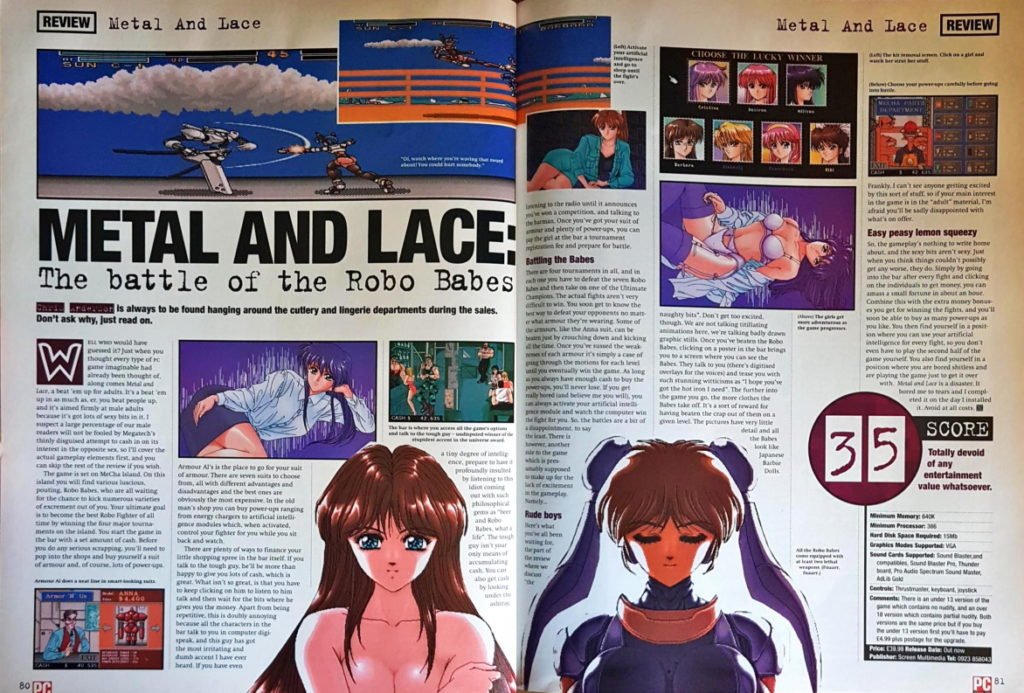The History of Lewd: Metal & Lace: The Battle of the Robo Babes
That’s one hell of a title, I’m sure you’ll agree — but you will probably also not be surprised to hear that Metal & Lace: The Battle of the Robo Babes was known by a somewhat different name in Japan. Or, more accurately, Metal & Lace: The Battle of the Robo Babes was actually a substantial reimagining of an earlier game by a company called Forest, with that Japan-only original being known as Ningyou Tsukai — literally “Puppeteer” or “Puppet Operator”.
In order to understand where this game came from, it’s necessary to look a little at the history of a company called Megatech. Unfortunately, as it happens, Megatech is a company for which there isn’t a whole amount of recorded history save for the fact that it popped up at some point prior to 1992, was based in California and was the first licensor of anime-style PC games — particularly those with sexually explicit content — in the United States.
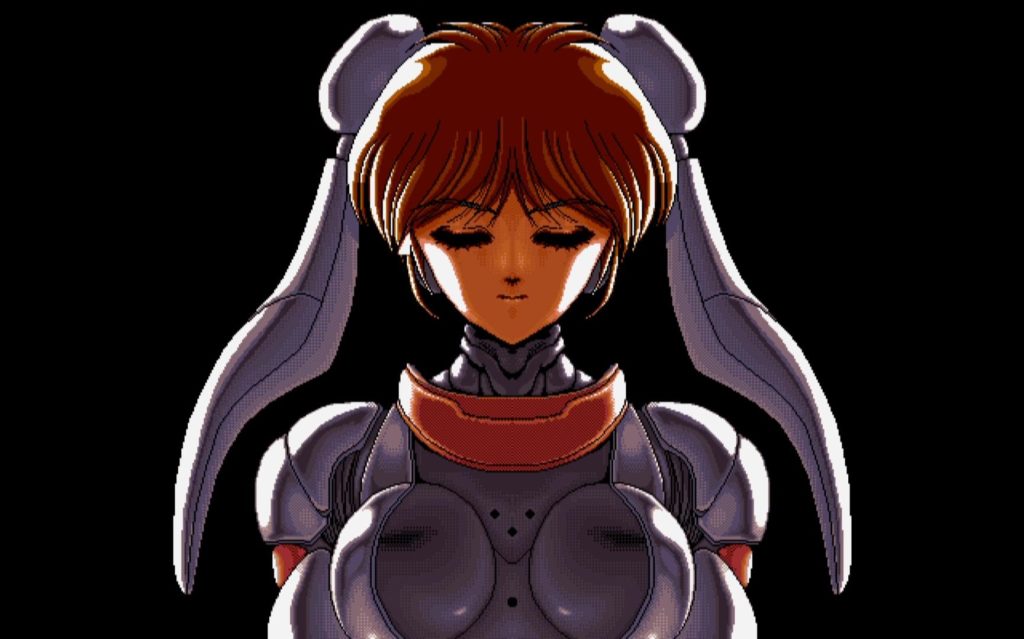
Megatech’s approach to localisation in these early days was to all but rebuild a game from scratch, effectively turning it into a brand new product rather than simply a translated version of the original. Their first release Cobra Mission: Panic in Cobra City, featured a radically different battle system from its Japanese PC-98 counterpart along with a different ending, new sidequests and edited graphics, for example.
In the case of Metal & Lace: The Battle of the Robo Babes, Megatech took an existing concept and expanded on it considerably, making an arguably superior game — albeit one that still isn’t that great to actually play. The art is lovely, though.
In Ningyou Tsukai, the spiritual precursor to Metal & Lace: The Battle of the Robo Babes, originally released for FM Towns and PC-98, you took on the role of a robotic warrior named Mimi who was tasked with beating six opponents for… some reason or other. Each opponent had to be beaten across three rounds, with each victory resulting in an image of them in various states of undress; unsurprisingly, the more you won, the more you saw.
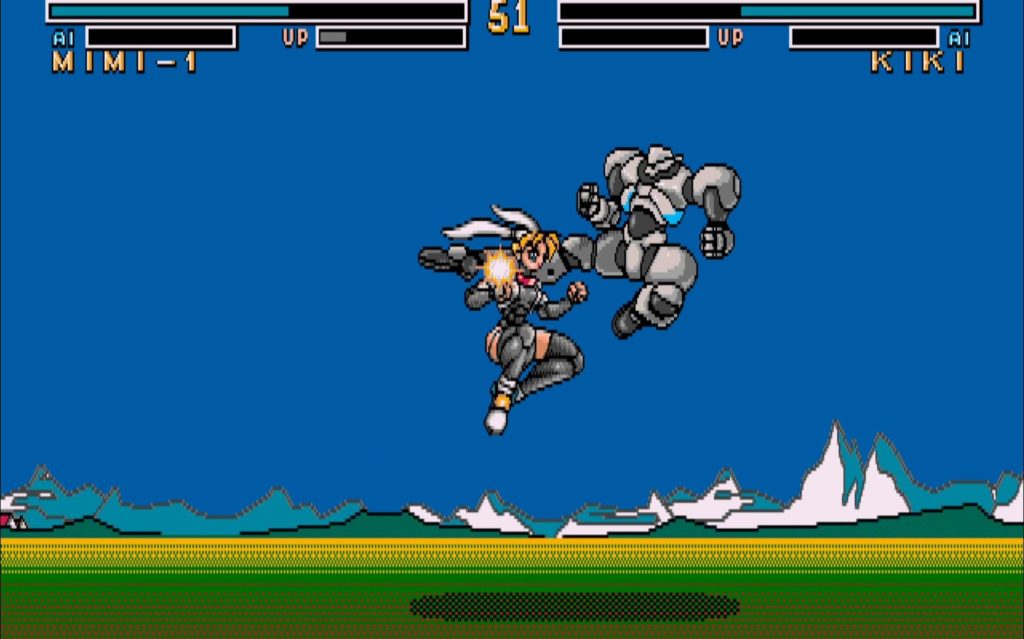
Metal & Lace: The Battle of the Robo Babes, meanwhile, added a degree more context to the experience by positioning you in the role of an aspiring MeCha [sic] enthusiast in the near future; in said future, all forms of violent and sexualised entertainment have been effectively outlawed, with the island on which the game takes place being one of the world’s last bastions of depravity.
MeCha fans come to the island in order to test their suits of robotic armour against the seven Robo Babes, and it’s with this in mind that you show up with a few thousand dollars in your pocket, ready to rock ’em and sock ’em. But first, there are preparations to be undertaken!
There’s actually a surprising amount of strategy and RPG-style gameplay in Metal & Lace: The Battle of the Robo Babes, considering that it’s best known for being a one-on-one fighting game. You access most of this through a first-person point-and-click interface that is initially completely obtuse — you have to click on a tiny poster on the bar to even start doing anything in the game, for example — but which soon becomes second nature, and there are a few fun Easter eggs to be discovered here and there, too.
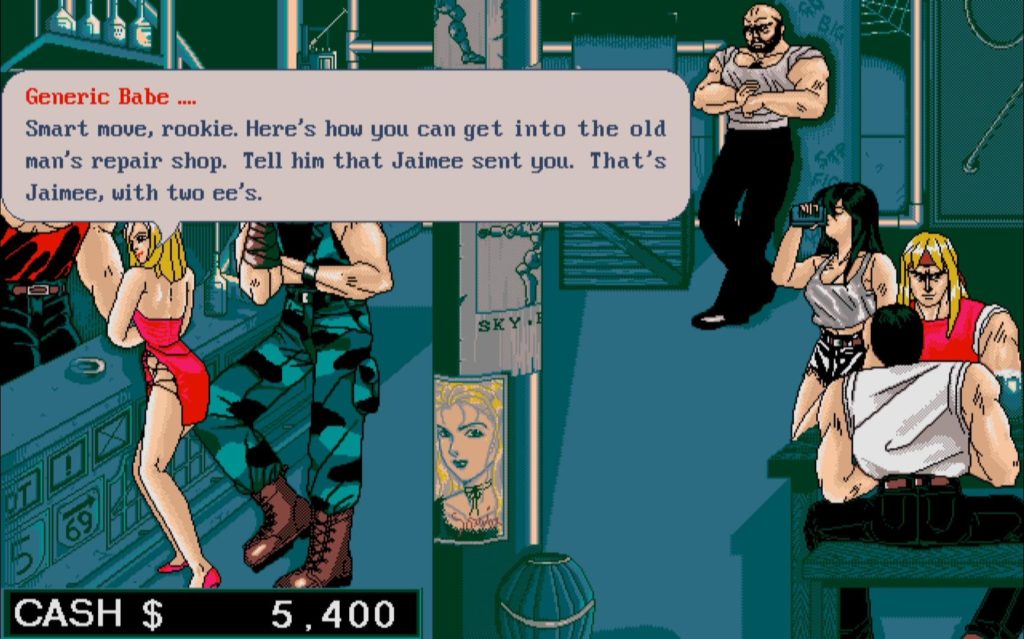
From the game’s main “bar” screen, you can interact with a number of characters to access various game options. You can also head up the not-terribly-apparent stairs towards the back of the room to actually purchase yourself a suit of armour, and you’ll need to do this before you even try and do anything else. You’re not going to get far against the Robo Babes with your bare hands, after all.
Each armour has its own set of statistics and distinctive set of moves, and repeatedly using the same armour in battle causes it to gain levels and become stronger. You can — and probably should — purchase multiple suits in the long term, since the different suits are more or less effective against one another, not necessarily in terms of damage but in terms of how their various moves act as good counters for one another.
Between battles in the Metal & Lace: The Battle of the Robo Babes tournament, you can visit the Mecha Parts Department shop and purchase various items. Batteries allow you to heal your armour — and are essential, since you don’t get HP back between battles, regardless of whether you win or lose — while power-ups allow you to buff your suit’s abilities for a temporary period of time during battle, AI chips allow you to let the computer take control for a few seconds and neural amplifiers increase your armour’s maximum HP for a single bout.
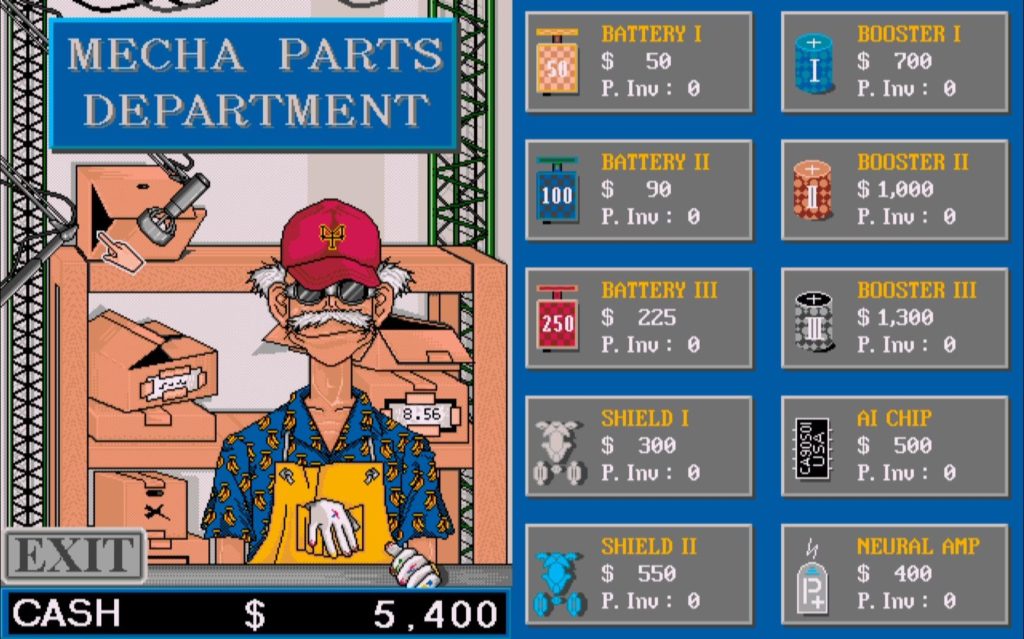
Once you’ve picked out a suit of armour for yourself and bought some consumables, you can hand over $150 to a young woman standing at the bar that acts as the game’s main menu and take on the Robo Babes for yourself. In order to pass through each “tier” of the tournament, you’ll need to defeat each of the Robo Babes twice each, with them bringing a different suit of armour from the same pool that is available to you each time you defeat them.
Combat in Metal & Lace: The Battle of the Robo Babes unfolds as a side-on, 2D, one-on-one fighting game. Each suit of armour has a fairly rudimentary set of moves that are carried out by pressing some combination of the directions and the punch or kick buttons. Rather tellingly, given the game’s origins, the “Mimi” suit has considerably more in the way of possible moves than any of the other suits; this is, of course, because Mimi was the only playable “character” in the original Ningyou Tsukai.
Metal & Lace: The Battle of the Robo Babes’ fighting engine is clunky and jerky but not without its redeeming features. The aforementioned sense of certain suits of armour being better “counters” for others becomes more apparent the more you play; this ends up making combat surprisingly tactical as you watch your opponent’s animations and wait for the perfect moment to knock them back with a well-timed kick or punch. It’s genuinely satisfying when you figure out the perfect counter for a particular move that has been giving you issues.
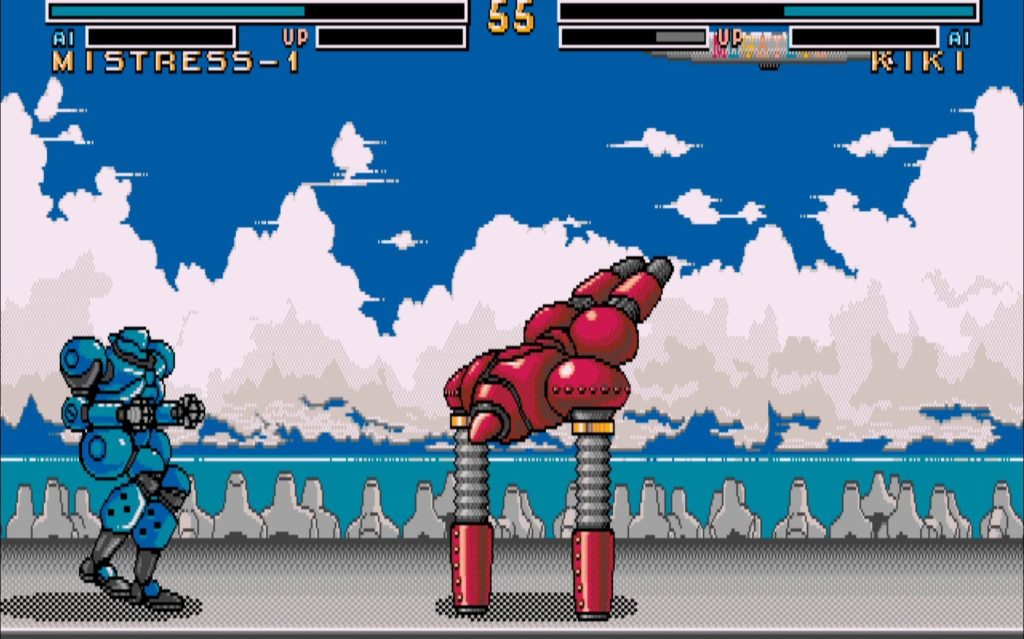
The biggest trouble with the combat in Metal & Lace: The Battle of the Robo Babes is that it’s sluggish. Special moves are unreliable to pull off because it seems to be mostly a matter of luck as to whether or not the game registers multiple button and/or direction presses at the same time, and regular moves are vastly underpowered in most circumstances.
The block is next to useless against the moves you might actually want to use it against, and the sluggish controls make it tricky to put some distance between you and your opponent rather than stand there rather ineffectually shielding yourself with your arms.
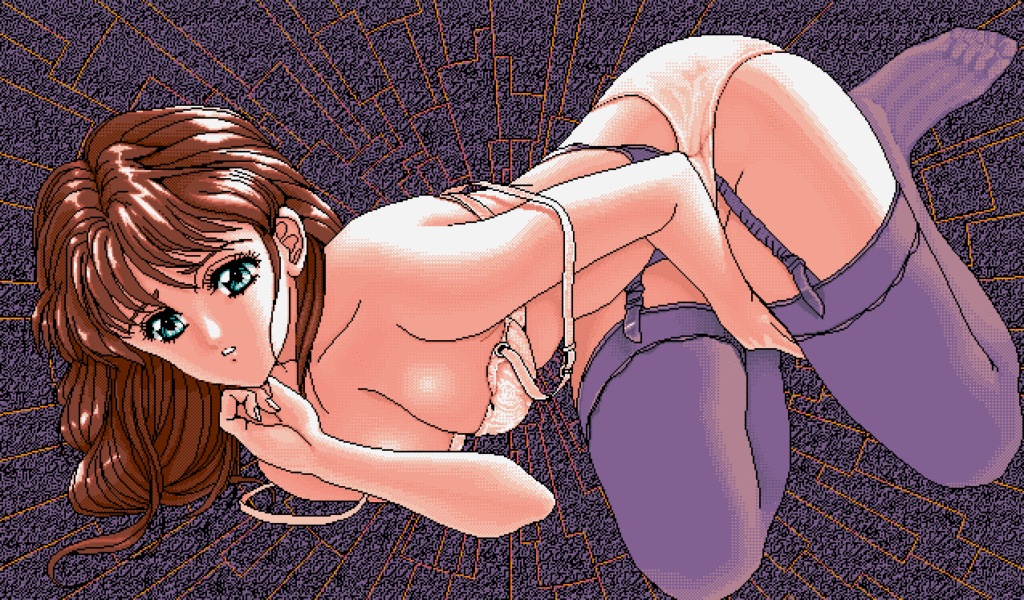
So what about the lewd side of things? Well, you’ll have to work hard for your saucy pics in this one; rather than gradually stripping your opponent bare over the course of three rounds as in the original Ningyou Tsukai, in Metal & Lace: The Battle of the Robo Babes, you won’t see a hint of anything even vaguely provocative until you’ve won a fair share of bouts — and even then, each opponent has several stages of undress. Don’t hop into this one expecting a quick, cheap thrill.
That said, the artwork is very lovely indeed, as one might typically expect from games whose origins were on the PC-98. The seven Robo Babes cater to a variety of different tastes, from bookish nerd to mature, elegant blonde, and the erotic images, while extremely tame even in the game’s “adult” version are sure to please fans of the distinctive PC-98 pixel art aesthetic.
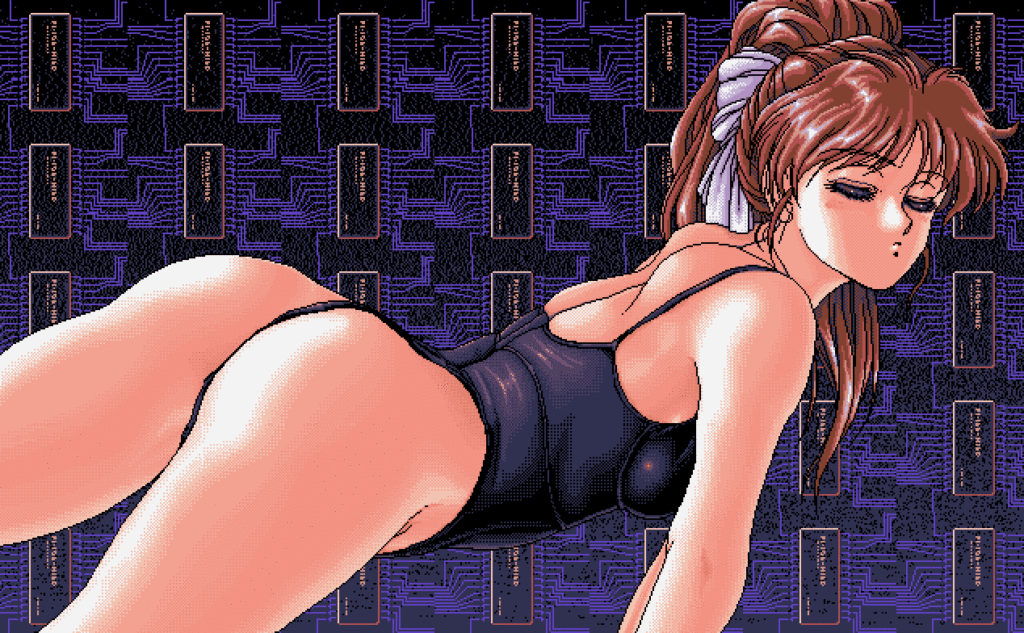
One area where Megatech’s version of the game does fall down a bit is in its English language voice acting — it’s truly terrible. Particularly awful in this regard is the single, generic “tough girl” voice that is used for all the Robo Babes; it’s completely incongruous with most of their appearances and is exceedingly jarring. It’s like whoever recorded the voice had no concept whatsoever of what the character they were supposed to be playing was like — or indeed even the conventions for anime dubs of the period.
Is the game actually worth playing, though? Well… yeah, kinda. Although not a particularly good fighting game, there’s definitely the seed of a very good idea here. The concept of having some lightweight strategic and RPG-style gameplay combined with fighting game mechanics is really solid; it’s just unfortunate that the fighting game side of things lets things down quite a bit. It’s by no means unplayable, but do be prepared for some frustration if you want to take this journey for yourself.
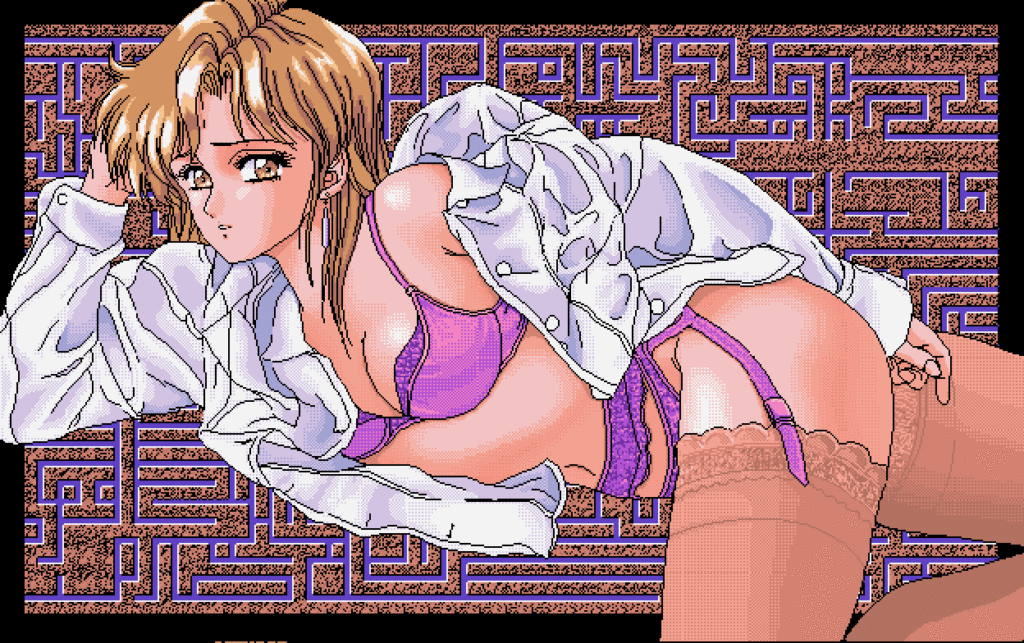
From a historical context, Metal & Lace: The Battle of the Robo Babes remains noteworthy as one of the first eroge that non-Japanese audiences ever saw — it even got coverage in the mainstream games press of the day, which is absolutely unthinkable these days.
That said, in a sign that some things never change, PC Zone magazine’s review of the game (in which they rated it with a score of 35% and claimed it was “totally devoid of any entertainment value whatsoever”) was needlessly disparaging about both the art in the game and the moral values of anyone who might be interested in playing this sort of thing. But oh well. Prudes will be prudes, it seems, whether it’s 1994 or 2021.
If you want to play Metal & Lace: The Battle of the Robo Babes for yourself today, there are no official means of getting hold of the game any more, since Megatech folded at some point between 1997 and 1999 (though they briefly reappeared as a mobile game publisher in 2011 before disappearing again) and, rather unsurprisingly, none of today’s digital storefronts have been going out of their way to secure the rights to this one.
If you can track yourself down a copy via some means, it plays perfectly nicely with DOSBox (or via the Web-based version of DOSBox on archive.org), so if you really want to see what a 1993 fighting game for MS-DOS PC looks like — and perhaps see a few pixel-art tiddies while you’re at it — then there’s some fun to be had. If nothing else, it’s a nice reminder of how far we’ve come — both in terms of gaming in general, and eroge specifically.
Join The Discussion
Rice Digital Discord
Rice Digital Twitter
Rice Digital Facebook
Or write us a letter for the Rice Digital Friday Letters Page by clicking here!
Disclosure: Some links in this article may be affiliate links, which means we may earn a small commission if you make a purchase after clicking on them. This is at no additional cost to you and helps support Rice Digital!
- Letter from the Editor: passing the torch - June 30, 2023
- Super Woden GP 2 is looking promising - June 30, 2023
- Inti Creates is making a 32 bit-style Love Live action platformer - June 26, 2023




